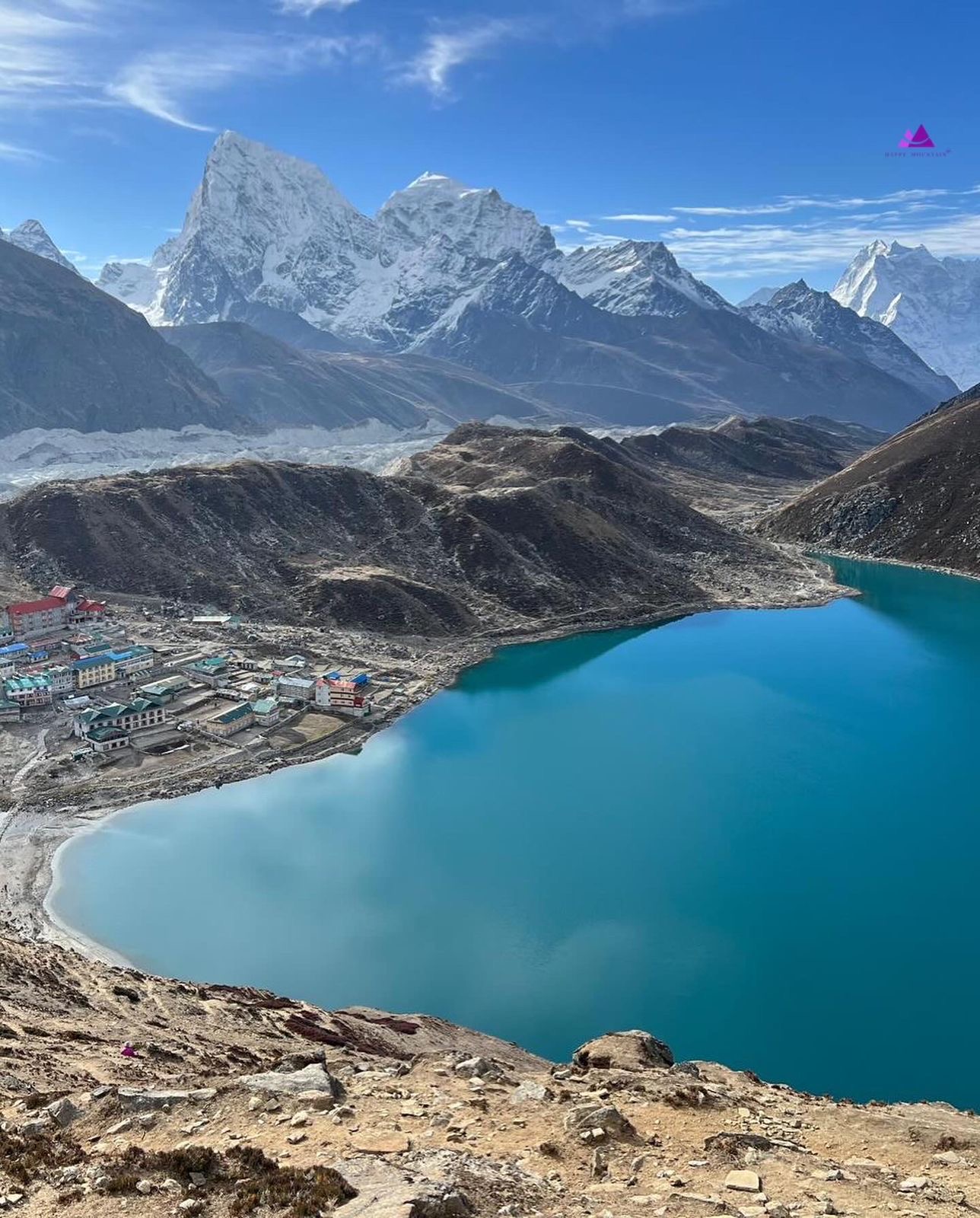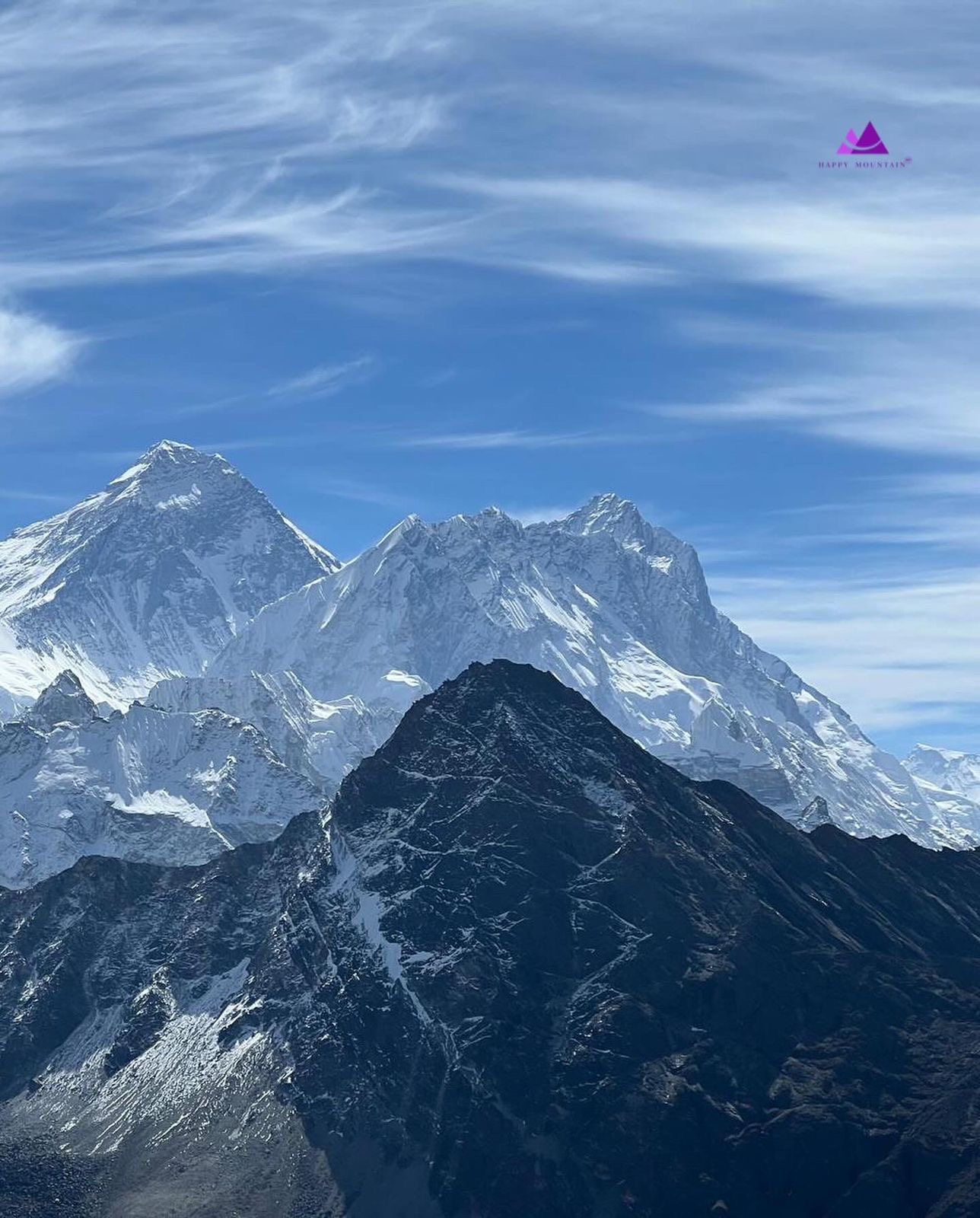Gokyo Lakes vs Everest Base Camp Trek: Which Himalayan Adventure Is Right for You?
When people think of trekking in Nepal. There’s one name that quickly comes to mind Everest Base Camp (EBC). The highest mountain on the planet stands with giants Lhotse, Nuptse, and Ama Dablam. Behind them and is the #1 bucket list adventure that symbolize the essence of being in the Himalayas.
Before the famous EBC trek, there is another trek just as beautiful, the Gokyo Lakes Trek. The Gokyo Lakes Trek is a quieter, more scenic experience. As we can see, incredible turquoise blue lakes and has an view of Everest in 180 degrees, which many travelers feel is better than from Base Camp.

So, is it Gokyo Lakes or Everest Base Camp? Both treks are incredible in their own right; just another experience. Here we will compare the two treks so you can determine what is best for your travel aspirations, interests, and trekking style.
1 Route Overview and Duration of both Trek.
Both treks begin the same way a once in a lifetime mountain flight from Kathamdnu (or Ramechhap) to Lukla, the “gateway” to the Everest region. From here, trekkers tour through the beautiful Sherpa villages. Through rhododendron forests, across high suspension bridges over the flowing Dudh Koshi River and finally, arrive at Namche Bazaar, the busy Sherpa capital.
Here at Namche, there is a split in the trails. The Everest Base Camp Trek trekkers continue to trek along the main Khumbu Valley through Tengboche, Dingboche, and Lobuche until they reach Everest Base Camp and famous viewpoint, Kala Patthar (5,545 m).
The Gokyo Lakes trek, steps west at Kyangjuma, to consider the route less traveled. Gokyo Valley is known for its glaciers lakes, and positioning for grand mountain reflections.
Everest Base Camp Trek:

Duration: 12-14 days
Distance: About 130 km round trip
Highest altitude: Kala Patthar (5,545 m)
Route type: out-and-back (same trail in and out)
Gokyo Lakes trek:
Duration: 13-16 days
Distance: About 135 km loop
Highest altitude: Gokyo Ri (5,367 m)
Route type: circular (return via a different route, often crossing the Cho La pass)
2. Scenery and Highlights
Everest Base Camp
The journey to Everest Base Camp traverses the Khumbu Valley. It is full of spectacular glaciers, forests of pine, and villages perched in the mountains. Gorgeous views of Ama Dablam, Lhotse, Nuptse, and Mount Everest itself are featured along the journey. The spiritual center of the trek is the Tengboche Monastery. Most trekkers stop here for a blessing before heading onward and upwards. The main attraction of trekking to Everest Base Camp (5,364 m) where climbers of Everest start their climb. While you can’t see the summit of Everest from Base Camp, the icefall and towering peaks will leave you indisbelief. The next morning, most trekkers will walk up to Kala Patthar a rocky viewpoint with views of Everest appearing golden in the morning sun.
In contrast, the Gokyo Lakes Trek is a different trek altogether. This portion of the trek features more remote villages like Dole and Machhermo before reaching the Gokyo Valley. Some of the highlights of the Gokyo Valley include six glacial lakes fed by the Ngozumpa Glacier, the largest glacier in Nepal.
3. Difficulty and Acclimatization
Both treks are moderately difficult, and it is the altitude that really challenges the trekker on either route. Since proper acclimatization and gradual ascent are recommended to avoid AMS (, Acute Mountain Sickness ) due to both exceeding 5,000 meters. There is more continuous climbing on the EBC trek, including several steep rise through rocky terrain and high winds as you approach Lobuche and Gorakshep.
The Gokyo Trek is usually at a more leisurely rate of ascent, but by adding Cho La Pass into the itinerary, one should expect a long climb over snow and rock at high altitude.
Which Is Harder?
EBC Trek: More popular, direct, yet more physically demanding since one has to make long hikes every day.
Gokyo Trek: It is slightly longer and higher in parts, with few steep climbs prior to the Cho La Pass.
The standard trek route to Everest Base Camp is usually taken by most trekkers. But if you have already gained some high-altitude trekking experience and want something off the beaten track. Then Gokyo Lakes offers just that ideal blend of challenge and serenity.
4. Accommodation and Facilities
Among the treks in Nepal, the Everest Base Camp route enjoys probably the best infrastructure: there are plenty of tea houses, bakeries, Wi-Fi spots, and even hot showers available almost everywhere. Places such as Namche Bazaar and Dingboche will surprise you with the comforts they offer in the altitude.

In contrast, the Gokyo Valley is less commercialized-the lodges are simpler. The food options are fewer and the trail has a more remote feeling to it. But that is one of the many things trekkers just love about this part of the country. Fewer crowds and quieter make for a more authentic Himalayan experience. If you join both routes across the Cho La Pass, you will notice that facilities between Thagnak and Dzongla are limited due to higher elevation and remoteness.
5. Culture and Sherpa Life
Both offer immense insight into the culture of the Sherpa people. But the EBC trail goes through villages that are more populated, allowing one to appreciate how tourism and traditional life. You’ll encounter colorful prayer flags, mani walls (religious structures built with stones inscribed with the mantra “Om Mani Padme Hum“), and Buddhist monasteries that reflect the spiritual heart of the Khumbu region.
The Gokyo Valley, takes one around smaller settlements and more conventional communities. Life here is less touched by tourism. It’s quieter and more peaceful. This gives trekkers a better opportunity to interact with locals and understand mountain traditions passed down for generations.
6. Cost Comparison
A standard-cost Everest Base Camp (EBC) trek will likely cost you between USD 1,200 and USD 1,800, depending on the package, guide, and time spent on the trek. This will normally include domestic flying, food, lodgings, permits, and a guide/porter.
The cost of the trek to the Gokyo Lakes is usually slightly more between USD 1,300 and USD 1,900. It is mainly due to the modestly longer duration and limited/less accessible lodgings. If you prove to add the Cho La Pass crossing or if you combine both routes, the price may increase beyond USD 1,900.
That said, both treks can “budgeted” successfully and independently if you are experienced with navigation, and altitude.
7. Optimal Times to Trek:
Spring (March through May) is the best time for both EBC and Gokyo Lakes trekking. Rhododendron flowers will be blooming. The weather will become clear, while the slopes of Everest will glow in the blue sky. Autumn (September to November) is the historic peak trekking season when both the weather remains stable, and mountain views are ultra-clear.
Winter trekking (December to February) has fewer trekkers on a more secluded trail, however be aware this can be at a cost. The temperature when trekking during the day can be significantly below freezing. The Cho La Pass is often closed due to heavy snowfalls. During winter, making this option more difficult. The monsoon (June to August) is generally avoided due to rain, leeches, visibility, plus thick cloud meaning you can’t see surrounding mountains.

8. Crowds and Atmosphere:
Gokyo Lakes is the easiest option for the most solitude. On the EBC route trekkers are likely to be join hundreds of other trekkers per day in peak season. While Gokyo route has a smaller number of trekkers on any given day. While trekking you likely will find yourself walking through the valley in complete silence, only hearing the wind and yak bells in your surroundings.
That said, the liveliness of the EBC trail is part of what makes it charming. Meeting other trekkers from all around the world, sharing stories around the fireplace of a cozy lodge, and feeling the excitement of everyone going to the same storied outcome, creates its own spirit of friendship.
9. The Views: Which Are Better?
It’s tough to say one trek is more beautiful than the other. It really depends on what’s most important to you.
Everest Base Camp Trek: Certainly brings a sense of accomplishment. You are at the foot of Everest and in the same location where climbers begin their ascent from.
Gokyo Lakes Trek: Certainly has the best panoramic view of Everest and the surrounding peaks from Gokyo Ri. Blueness of lakes, snowy fields and distant enormous giants pure Himalayan magic.
If your overall aim is to be at the foot of Everest, take EBC. If your aim is to see Everest at its most photogenic, and potentially the best view, take Gokyo Lakes.

10. Can You Do Both Treks?
Absolutely, yes many experienced trekkers have! The Everest Base Camp trek with Gokyo Lakes and Cho La Pass trek is one of Nepal’s most rewarding treks. Because it means you will experience the best of both worlds: the peacefulness of Gokyo Valley and the panorama of Everest Base Camp.
The combined trek is usually completed in 17-20 days with the adventure of crossing the high and icy Cho La Pass from Thagnak (near Gokyo) to Dzongla (from the EBC side). It is more difficult but offers unmatched variety in terms of landscape range, culture, adventure, etc.
Conclusion
Both the Gokyo Lakes Trek and Everest Base Camp trek offer experiences to last a lifetime. The EBC trek completes the dream being under the world’s tallest peak. The Gokyo Lakes Trek and calm provide space for reflection literally and spiritually in one of the most beautiful corners of the Himalayas.
If you are looking for the classic adventure and excitement of a trip to an iconic and historical destination in the Himalayas. You will be attract toward the Everest Base Camp (EBC). If you would rather something more low-key, focused parties, and without the crowd noise while also recognizing lakes and world-classview. And ultimately more peace of mind Gokyo Lakes trek is likely to “steal” for you.
Regardless, the experience in the Khumbu region of Nepal. It is not about arriving at a location or particular place it showcases the strength we find. The moments of serenity, and the awe that we experience, or at least try to experience at every step we take in the Khumbu region of Nepal. Contact us today at Happy Mountain Nepal, on Facebook, Instagram, or TikTok .
